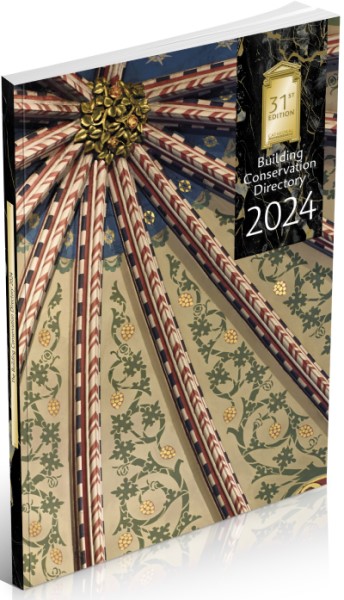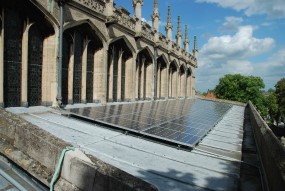IN PRINT...

The Building Conservation Directory
The 2024 edition brings together the latest expert advice and up-to-date information on craft skills, conservation products and specialist services, as well as course listings, sources of advice and other essential information.
A free digital 'flipping book' version is available here and you can order a hard copy here.

Submissions Welcome...
We are always looking for new articles which draw attention to key issues likely to be encountered by those responsible for the conservation or adaptation of historic buildings and sites for our magazines.
Guidance for authors is available here.
...AND ONLINE
Historic Churches magazine
Current issues in this 30th edition of the BCD supplement include sustainability, sources of funding, and how we keep our most important places of worship open and cared for.
For full details of what's included in this latest edition and to order your copy see here.
 Solar panels on a church roof (Photo: David Prescott)
Solar panels on a church roof (Photo: David Prescott)

New Articles
Reinstating missing features
The reinstatement of missing features is often contentious. Eva Palacios considers the pitfalls, opportunities and practicalities of conservation repairs and restoration work.
 Lattice work at Battersea Arts Centre provides a contemporary response to what was lost in a fire (Photo: Eva Palacios)
Lattice work at Battersea Arts Centre provides a contemporary response to what was lost in a fire (Photo: Eva Palacios)

EVENTS
All events
KEEP IN TOUCH
The next edition of Historic Churches is now taking shape. To ensure you receive a free digital copy, please sign up here.







